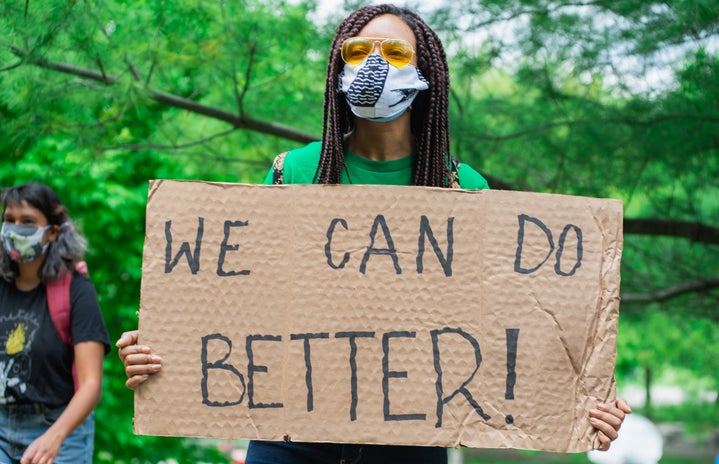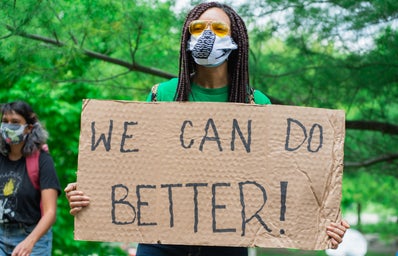Cancer Alley. This may sound like the name of a post-apocalyptic wasteland plagued by nuclear waste and devoid of all signs of life. However, it is in actuality a stretch of communities from New Orleans to Baton Rouge where the concentration of petrochemical facilities is so high that the residents have the highest rate of air pollution caused cancer in the U.S. This is a startlingly real place in which people are living and dying. Unfortunately, this case is not unique or rare, this is a widespread problem sweeping the U.S., in which manufacturing facilities set up near small communities and dump their hazardous wastes into the surrounding environment, resulting in a medley of negative environmental and health consequences.
There is a distinct pattern that has revealed itself over the years where communities of color experience these environmental hazards more frequently than their white counterparts. Minority groups are often targeted by corporations, in fact, studies have shown that “African Americans are 75% more likely than White people to live in “fence-line” communities (areas near commercial facilities that produce noise, odor, traffic, or emissions that directly affect the population)” (Patnaik et al. 1). Communities of color are subjected to these conditions because they are underrepresented in the environmental protection movement and thus have a very small outlet for their concerns to be aired.
“African Americans are 75% more likely than White people to live in ‘fence-line’ communities.”
-Patnaik et al.
This is where the concept of environmental justice comes into play. Environmental justice is based on the ideology that human concerns can’t be separated from environmental and social issues; it seeks to acknowledge the disproportionate effect of environmental degradation and address this gap through social change. The first step in addressing this disparity is understanding why communities of color are more at risk for environmental hazards. A recent study of some of the largest metropolitan areas in the U.S. found that 35% of Black residents lived in a poor locale, versus 9% of white residents (Kneebone & Reeves 1). This discrepancy exists primarily because of the systemic racism that has trapped minorities and an endless cycle of poverty. People of color are repeatedly discriminated against in the job market and are often refused higher-paying careers simply based on the color of their skin. Because of this, they are forced to continue living on low-wage jobs and become trapped in low-income communities which are the primary targets for corporations looking to develop manufacturing plants. This is just one situation out of the endless paths which confine people of color in impoverished conditions.
Why are these corporations allowed to pollute communities freely with seemingly no consequences? This is primarily due to the fact that these petrochemical facilities and other plants like them are a vital part of the American economy. They are subsidized by state governments to encourage the development of these manufacturers to spur the state’s economy and encourage market competition. Because of the state and federal investment in these companies they can avoid many consequences and proceed with their illegal activities despite the regulations put in place meant to stop them.
This manipulation of power has led to the harm of thousands of citizens and without proper consequences, this exploitation will never cease. We must hold the industry and manufacturing corporations accountable for their environmental and social violations and make reparations via economic assistance to the communities that were wronged.
As discouraging as many of these case studies are, this desolate state is not how it must remain. Environmental activism is growing in popularity around the world as more and more people are beginning to participate in their communities to rally for what is right and just. Our generation is tasked with environmental protection like no previous generations; we must work to acknowledge and correct the shortcomings of the past. We must start at the industrial level and create a sense of accountability for the large corporations which influence so much of our society. It is only through public awareness and outrage that we can achieve these goals. Hope is the driving force behind these movements: hope for a cleaner future, hope for a safer environment for future generations, hope for justice, and reparations. As environmentalist Paul Hawken once said: “This is your century. Take it and run as if your life depends on it.”
“This is your century. Take it and run as if your life depends on it.”
-Paul Hawken
References
Kneebone, Elizabeth, and Richard V. Reeves. “The Intersection of Race, Place, and Multidimensional Poverty.” Brookings, Brookings, 15 Aug. 2017, https://www.brookings.edu/research/the-intersection-of-race-place-and-multidimensional-poverty/.
Nicholson, Simon, et al. Global Environmental Politics from Person to Planet. The Power of Environmental Activism, Paradigm Publishers, 2016.
Patnaik, Aneesh, et al. “Racial Disparities and Climate Change – Psci.” Princeton University, The Trustees of Princeton University, 15 Aug. 2020, https://psci.princeton.edu/tips/2020/8/15/racial-disparities-and-climate-change.

